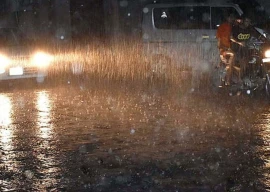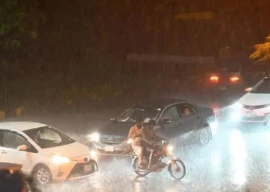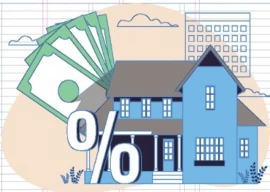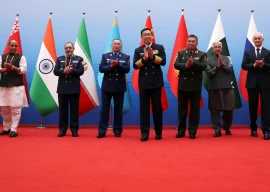
For the last few years, Pakistan’s adult literacy rate has stagnated at 58% – almost half the country’s adult population is unable to read or write. The figure is not surprising when you consider that only 50% of the country’s rural population has ever attended school; the number is higher for urban populations, at 73%.
According to the Pakistan Education Atlas 2013, launched on Tuesday, improvement in the education sector moves at a snail’s pace, with 32% of children aged 5-9 years out of school. 17% of primary schools consist of a single room.

It’s not all grim news, though – 91% of girls make it from primary school to middle school (higher than the number of boys, at 78%).
State Minister for Education, Trainings and Standards in Higher Education Balighur Rehman formally launched the report on Tuesday and reiterated the government’s pledge to improve education in the country. Even though education has been devolved to provinces, he said, they ‘have agreed to the constitution of a National Curriculum Commission to bring the education system on the same page across Pakistan’. Speaking at the launch, World Food Programme Representative and Country Director in Pakistan Lola Castro said the WFP had contributed to the report as it wished to ‘support and promote this important educational undertaking’ in the country.
According to the report, almost seven million children are out of primary schools in the country. “The quality of education across multiple levels is also lagging by most standards,” the report states. Some provinces fare relatively better than others in the education sector, with a ‘survival rate’ – the percentage of students completing primary school education – of 96% in Islamabad Capital Territory and a robust 95% in Gilgit-Baltistan. Khyber Pakhtunkhwa clocks in at 64%. The number is lowest in Balochistan and Sindh – 43% each. Survival rates in Punjab stand at 56%, 48% in Fata.

From primary to middle school
The results are encouraging with regards to the number of students able to reach middle school in Pakistan, particularly in Fata, where the number has crept up from 44% in 2010 to 61% this year. 100% of Islamabad students make it to middle school and 87% in Punjab. The number stands at 89% in G-B, 72% in K-P, 69% in Azad Jammu Kashmir and 67% in Balochistan. Sindh has the lowest number of students reaching middle-school level, at 59%.
Poor grade
Students in 64% of primary schools in the country have access to drinking water – in Azad Jammu Kashmir, the number plummets to 27%. In Islamabad, 185 schools out of 191 have access to clean water.
Meanwhile, 49% of government primary schools have electricity. Of more than 10,000 schools in Balochistan, only 1,662 schools are provided with electricity.

Furthermore, only 58% of schools in the country have facilities for toilets – only 2,000 schools in Balochistan provided such access to students.
When State Minister for Education, Trainings and Standards in Higher Education Balighur Rehman was questioned about the report’s findings, he said a 188-billion rupee National Plan of Action has been earmarked over three years to target out-of-school children and missing facilities in schools across the country.
Published in The Express Tribune, March 26th, 2014.


















COMMENTS
Comments are moderated and generally will be posted if they are on-topic and not abusive.
For more information, please see our Comments FAQ